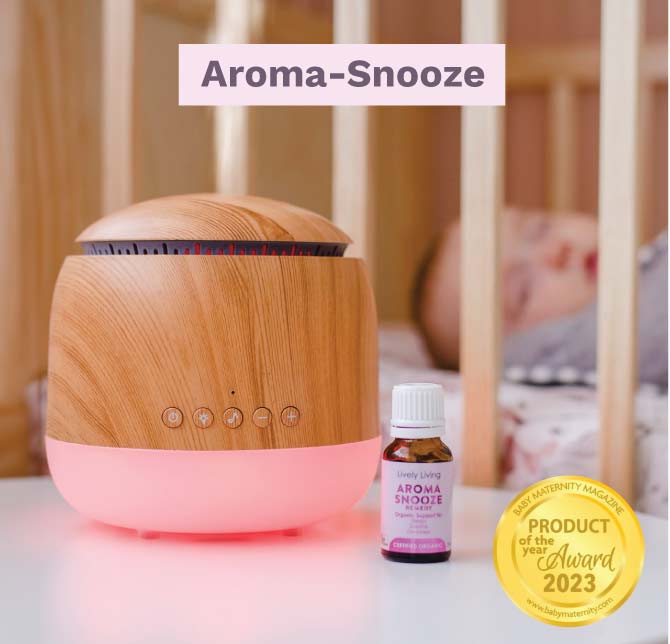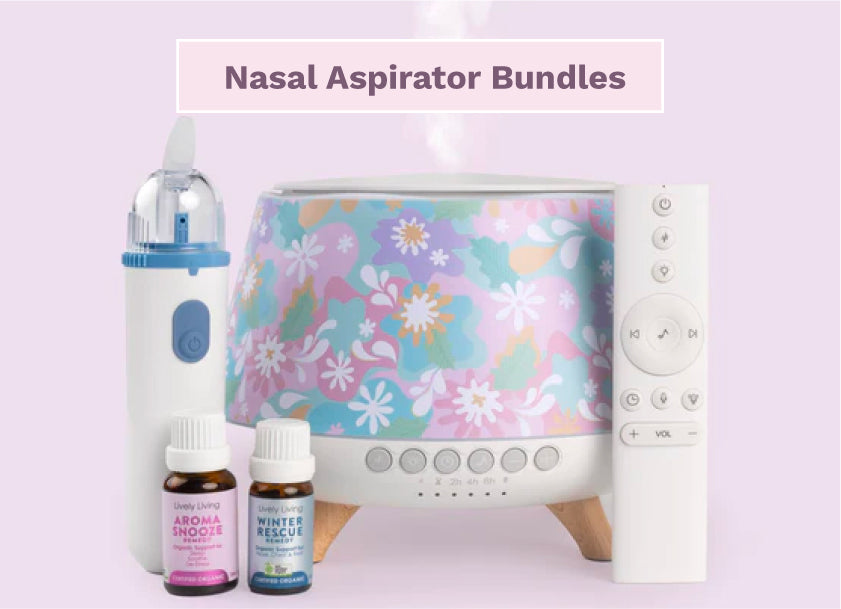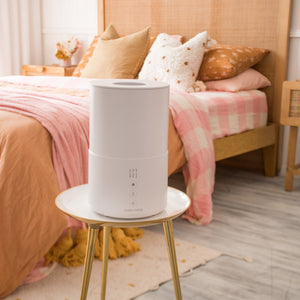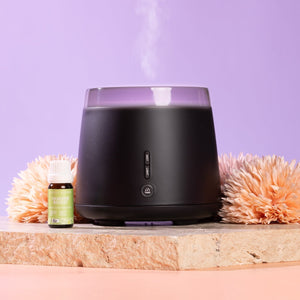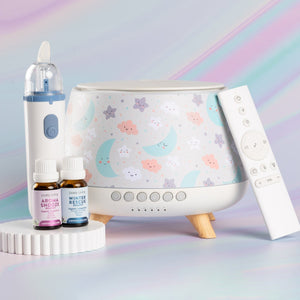Decoding Your Child's Cough: When to Seek Help and Why
The persistent sound of your child coughing can be unsettling for any parent. It's a noise that often sparks immediate worry and makes caring for a coughing child challenging. You might wonder if it's a minor irritation, what may have cough caused it, or if it signals something more serious. Decoding your child's cough: when to seek help is clearer when you understand what to listen for. This guide will help you understand the different cough symptoms and identify when medical attention is necessary for your child cough, especially if it's more than a simple cough cold.
Table Of Contents:
- Why Do Kids Cough Anyway?
-
Listening Closely: Different Cough Sounds and What They Mean
- The Dry, Hacking Cough
- Decoding Your Child's Cough: When to Seek Help – Red Flags to Watch For
- Comfort Measures at Home for Mild Coughs
- A Word on Essential Oils for Children's Coughs
- How Long Do Coughs Typically Last?
- Your Parental Instinct is Powerful
- Conclusion
Why Do Kids Cough Anyway?
A cough is a reflex, your child's body working to protect itself. It acts as a natural defense for their respiratory tract. This reflex clears irritants, mucus, or foreign particles from their airways. Common causes include viral infections such as the common cold or flu, where a runny nose often precedes or accompanies the cough. Allergies or asthma can also trigger coughing, and sometimes even dry air or dust is the culprit.
Listening Closely: Different Cough Sounds and What They Mean
The specific cough sound your child makes offers important clues. Different coughs can indicate different issues. Recognizing these sounds helps you decide if a doctor's visit is needed.
Understanding the different cough sounds can be simplified with a quick comparison. Here's a table summarizing common cough types and their typical characteristics:
| Cough Type | Sound Description | Common Associated Conditions | Key Considerations |
|---|---|---|---|
| Wet (Productive) | Rattly, moist, produces phlegm | Common cold, bronchitis, other respiratory tract infections | Helps clear mucus; seek help if persistent or with other severe symptoms. |
| Dry, Hacking | No mucus, irritating, can be in fits | Irritants, early viral infection, asthma, allergic rhinitis | Consider environmental triggers and asthma, especially if chronic. |
| Barking (Seal-like) | Harsh, barking sound | Croup | Often sudden, at night; watch for difficulty breathing. |
| Whooping Cough (Pertussis) | Severe coughing fits, possible 'whoop' sound on inhale | Bacterial infection (Bordetella pertussis) | Serious, especially for infants; DTaP vaccine is protective. |
| Wheezing Cough | High-pitched whistling sound with cough, usually on exhale | Asthma, bronchiolitis | Indicates narrowed airways; medical evaluation needed. |
This table offers a general guide. Always consider the full picture of your child's cough symptoms and overall health.
The Wet, Phlegmy Cough (Productive Cough)
A wet cough, also known as a productive cough, sounds moist or rattly due to mucus in the airways. Your child may cough up phlegm, which can vary in color. This cough often accompanies a common cold or a tract infection like bronchitis. Bronchitis, as detailed by the American Lung Association, is inflammation of the bronchial tubes.
This type of cough helps clear mucus, which is beneficial. However, if it persists or your child appears very sick, consult a doctor. Sometimes, a prolonged wet cough could signal a bacterial infection needing treatment. Understanding these cough symptoms is important.
The Dry, Hacking Cough
A dry cough produces little to no mucus. It often sounds irritating and can occur in persistent, long fits. Environmental irritants like smoke or strong fumes can trigger this type of cough. It might also be an early symptom of a viral infection before mucus develops.
For some children, a dry, hacking cough, especially at night or during physical activity, may indicate asthma. Asthma causes airway inflammation and narrowing. If your child experiences a dry cough alongside a stuffy nose or other allergy symptoms, allergic rhinitis could also be a factor.
The Barking Cough (Like a Seal)
A cough that sounds like a barking seal is a hallmark of croup. Croup involves swelling in the upper airway, around the larynx and trachea. This swelling narrows the airway, leading to difficulty breathing and the distinctive barking cough sound.
Croup often starts suddenly, typically at night, and is common in younger children, as noted by the Mayo Clinic. While mild cases may be managed at home, any trouble breathing requires immediate medical care. A harsh, raspy sound during inhalation, known as stridor, can also accompany this cough.
The Whooping Cough (Pertussis)
Pertussis, commonly called whooping cough, is a serious respiratory tract infection. It leads to severe, uncontrollable, and exhausting coughing fits. Following these coughing fits, a child might gasp for air, making a 'whoop' sound, although this whooping sound is not always present, particularly in very young infants.
The Centers for Disease Control and Prevention (CDC) emphasizes that pertussis can be life-threatening for babies. The DTaP vaccine offers the best protection for child health. If you suspect whooping cough, seek immediate medical attention as early treatment is critical.
The Wheezing Cough
A cough with wheezing indicates narrowing in the lower airways. Wheezing is a high-pitched whistling sound, typically heard during exhalation. This cough wheezing is often linked to asthma, where airways constrict and inflame, or potentially other lung disease.
Bronchiolitis, a common viral infection of the small airways in infants, also causes wheezing and coughing. If your child is wheezing, a doctor's visit is necessary for diagnosis and treatment. An asthma action plan, detailing specific asthma action steps, may be developed if asthma is confirmed.
The Nighttime Cough
Certain coughs intensify at night, making the cough worse. This can result from postnasal drip, where mucus from the nose and sinuses drains down the throat when lying flat. Asthma symptoms also frequently flare up during nighttime hours for many children.
Gastroesophageal reflux (GERD), where stomach acid irritates the esophagus, is another potential cause. A less common consideration, especially if daytime symptoms are minimal, could be a habit cough, although these typically improve with sleep. Recognizing whether the cough daytime pattern differs can help pinpoint the trigger.
The Cough with a Fever
A cough frequently accompanies a fever when your child is battling an infection. This could be a common cold, influenza, or a more serious condition like pneumonia. The degree of the high fever and your child's overall behavior are key factors.
A low-grade fever with a mild cough may not be cause for alarm. However, a high fever, particularly in an infant, or a persistent high fever with a severe child cough warrants a doctor's visit. Monitoring these common symptoms in children children is essential.
Decoding Your Child's Cough: When to Seek Help – Red Flags to Watch For
Recognizing when a child's cough needs medical help is crucial. Here are important warning signs indicating you should contact your pediatrician or seek medical attention:
- Your child is having trouble breathing. This includes fast breathing, flared nostrils, or retractions (ribs pulling in).
- You notice a bluish tint to their lips, face, or tongue (cyanosis), signaling low oxygen.
- There's a high fever, especially over 100.4°F (38°C) rectally in an infant under 3 months, or a persistent high fever in an older child.
- Your child seems unusually tired, listless (lethargic), or extremely irritable.
- You observe signs of dehydration, like a dry mouth, few tears, or significantly fewer wet diapers. For an infant, this means fewer than 4-6 wet diapers in 24 hours.
- They are coughing up blood, even a small amount.
- The cough began very suddenly and is severe, especially if there's a chance your child choked on a foreign body.
- The cough has been ongoing for more than two to three weeks without improvement, becoming a persistent cough.
- The cough is getting worse instead of better, despite home comfort measures.
- Your infant, particularly those of a young children age (under 3 months old), has any significant cough or a fever. Babies this young can deteriorate quickly.
- Your child complains of chest pain when they cough or breathe.
- You hear the characteristic 'whoop' sound after coughing fits.
If you notice any of these red flags, prompt medical evaluation is essential, and in some cases, a hospital child visit might be necessary to rule out serious conditions. Prompt action can make a significant difference in your child's outcome.
Comfort Measures at Home for Mild Coughs
For a mild cough from a common cold, home comfort measures can help your child feel better. These steps are for mild symptoms and don't replace medical advice if concerns arise. Adequate hydration is key, so offer plenty of water, clear broths, or diluted juice.
If your child is over one year old, about half a teaspoon of honey can soothe the throat and ease coughing, especially at night; the Mayo Clinic Health System has noted its effectiveness. Honey should not be given to infants under one year due to the risk of infant botulism. A cool-mist humidifier in your child's room adds moisture to the air, soothing irritated airways and loosening mucus. Alternatively, a steamy bathroom (run a hot shower for 10-15 minutes with the door closed) can provide similar relief.
For older children, an extra pillow to elevate their head may reduce coughing from postnasal drip. It is crucial to keep your home free of irritants; this must include cigarette smoke. While some parents consider over-the-counter cough medicine or cough drops, these are generally not recommended for young children without a doctor's approval due to potential side effects and lack of proven efficacy for certain children age groups.
A Word on Essential Oils for Children's Coughs
Many parents explore essential oils for ailments like coughs, seeking gentle ways to help their children. However, using essential oils with children, particularly young ones, requires significant caution. Oils safe for adults can be too potent or harmful for children, as highlighted by resources like the Children's Hospital of Philadelphia.
Direct application of undiluted oils or ingestion by children is not recommended and can be dangerous. If considering essential oils, diffusion is generally viewed as a safer method, but careful oil selection is vital. Gentle oils such as lavender or chamomile may be diffused briefly in a well-ventilated space to promote calm, which might indirectly aid a restless, coughing child.
Some oils like eucalyptus or peppermint are mentioned for respiratory support but are very strong. These should be avoided for young children (peppermint under age 2, certain eucalyptus types under age 10) or used with extreme caution—highly diluted and far from the child's face—if diffused for older children. Ensure good ventilation and never leave a child unattended with a running diffuser.
If considering topical use on older children, perform a patch test with diluted oil after researching child-safe dilutions. Remember, essential oils are, at best, supportive and do not treat coughs medically nor replace necessary care for concerning cough symptoms. Always consult your pediatrician before using essential oils for your child, especially if they have asthma or other respiratory illnesses.
How Long Do Coughs Typically Last?
Parents often wonder about the duration of their child's cough. A cough typically associated with a viral infection, such as the common cold, can persist longer than many expect. Many coughs caused by simple viruses resolve on their own, but it's common for such a cough lasting for two to four weeks even after other cold symptoms subside, as airways remain sensitive.
Knowing this timeline can help manage expectations. However, if a cough shows no improvement after a few weeks, or if it's worsening, a doctor's visit is warranted. A persistent cough, especially a wet one, could indicate conditions beyond a simple viral infection; it may sometimes signal a chronic infection within the respiratory tract.
One such condition is protracted bacterial bronchitis (PBB). PBB is characterized by a chronic wet cough lasting more than four weeks that resolves with appropriate antibiotic treatment. This condition is a common cause of persistent wet cough in healthy children, and it's important for doctors to consider this protracted bacterial issue if a cough lingers. Distinguishing between a lingering viral cough and something like bacterial bronchitis requires medical assessment, and sometimes doctors may prescribe antibiotics if PBB is suspected.
Your Parental Instinct is Powerful
No article can substitute your parental intuition. You understand your child best. If something about their cough or overall condition feels off, do not hesitate to seek medical advice from your health care provider.
Even if symptoms don't perfectly match every listed red flag, your concern is valid. It is always better to have your child evaluated for peace of mind or to ensure they receive timely help. Trust your instincts; they are an invaluable guide in caring for your child health.
Conclusion
Hearing your child cough can be concerning, but understanding various cough types and warning signs empowers you. This knowledge is central to decoding your child's cough: when to seek help. Many coughs are part of common childhood illnesses, but some, like a chronic cough, need a doctor's evaluation.




